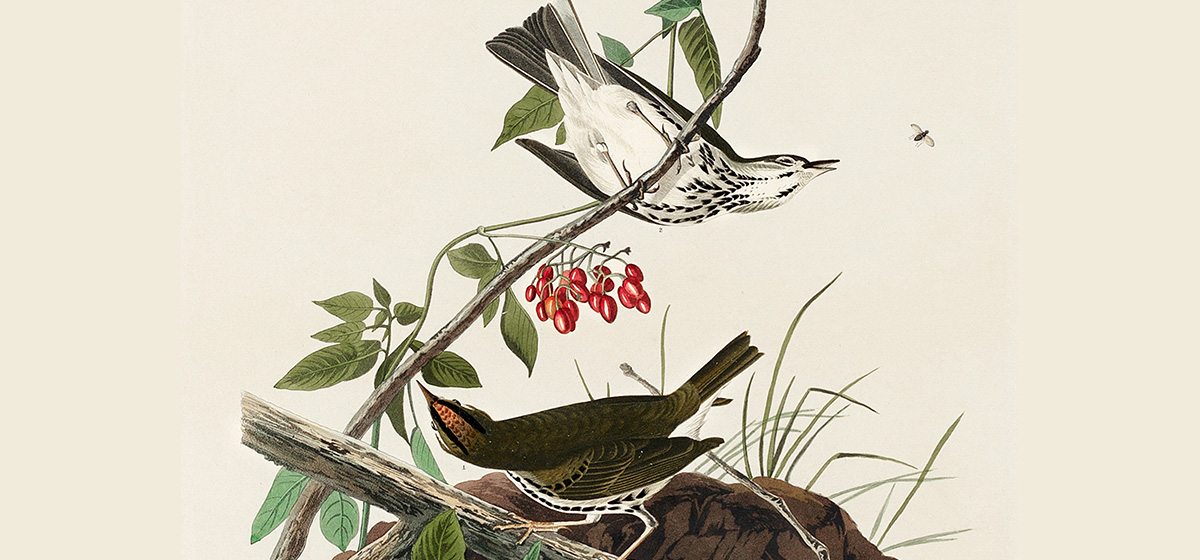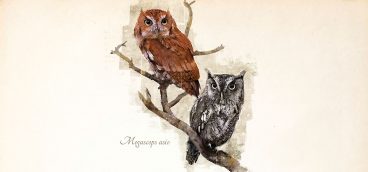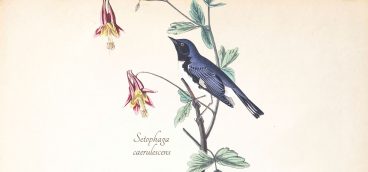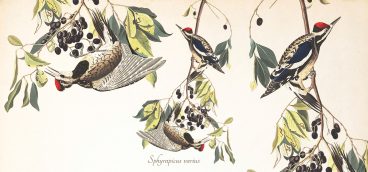
In 1916 when Robert Frost published “The Oven Bird” in his collection Mountain Interval, he had just returned from three years in England. There, he found his poetic voice in both the vernacular and imagery of New England as well as traditional British forms.
“The Oven Bird,” a sonnet like many of Frost’s poems, describes a wood warbler, which is very common in summer throughout forested parts of Pennsylvania. Somewhat unusual as a bird poem for being about a specific species, it begins with an octave, eight lines, and takes a thematic turn in the final six, the sestet.
The Oven Bird
There is a singer everyone has heard,
Loud, a mid-summer and a mid-wood bird,
Who makes the solid tree trunks sound again.
He says that leaves are old and that for flowers
Mid-summer is to spring as one to ten.
He says the early petal-fall is past
When pear and cherry bloom went down in showers
On sunny days a moment overcast;
And comes that other fall we name the fall.
He says the highway dust is over all.
The bird would cease and be as other birds
But that he knows in singing not to sing.
The question that he frames in all but words
Is what to make of a diminished thing.
The ovenbird, seiurus aurocapilla, has a spirited, resonant song. Roger Tory Peterson describes it as “teach’er, TEACH’ER, TEACH’ER,” loud enough to echo through the woods. Frost plays with the notion that the song is well known, “a song everyone has heard,” perhaps asking us to remember our school days and the sound of our teacher’s voice. Frost is correct in placing the ovenbird “midwood,” or deep in unbroken forest. This isn’t a bird of the suburban backyard, but instead a species of thicker woods.
Ovenbirds take their name from the small, domed nests females build within deciduous woods on the forest floor. These nests, mounded up with a small entrance hole, look like old clay outdoor ovens. Frost’s bird sings in midsummer, marking the passage of the breeding season in losses: gone are verdant new leaves and spring blossoms. Other, larger changes are afoot, hard to decipher but looming.
The passage of time only serves to highlight changes wrought on the natural world, changes that can only be read as threatening. This “midwood bird” is paradoxically covered in “highway dust,” the dust of human encroachment, the forest fragmenting around it. And indeed, ovenbird habitat is threatened by logging, land development and forest practices that whittle away at the deep woods. With its survival threatened by a “diminished” landscape, Frost’s teacher can only become silent. It takes the poet, another kind of singer, to “frame” the issue in “words.”
Have a favorite bird poem? Email me your avian verse, encounters, photos or questions at PQonthewing@gmail.com.





